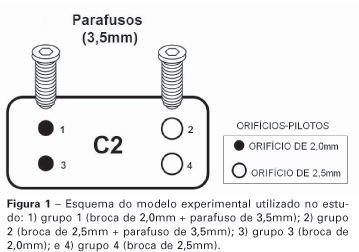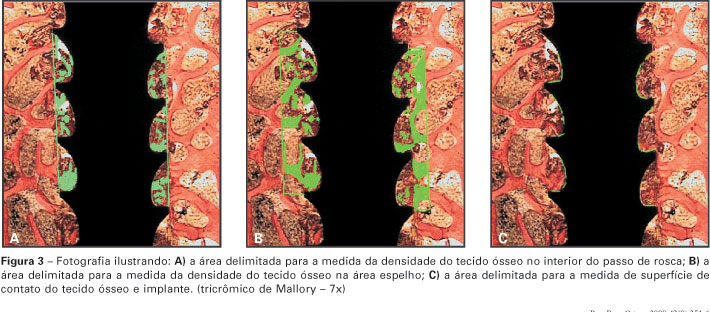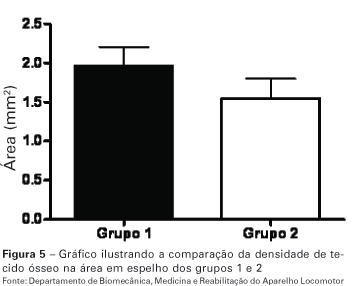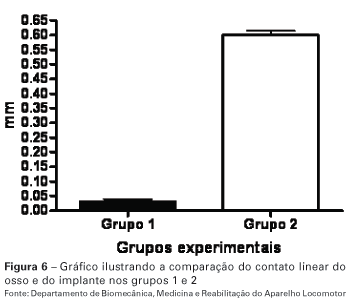OBJECTIVE: To study acute changes in the interface between screws and vertebral bone tissue, considering the pilot hole diameter in relation to the inner diameter of the screw. METHODS: The study was carried out in sheep, and the second cervical vertebra was selected for the study. Cortical screws were used, with 3.5 mm of external diameter (2.4 mm of inner diameter) and 14 mm in length. Four experimental groups were formed: 1 2.0 mm pilot hole and placement of 3.5 mm screw; 2 - 2.5 mm pilot whole and placement of 2.5 mm screw; 3 - 2 mm pilot hole with no screw placement; and 4 2.5 mm pilot whole with no screw placement. RESULTS: Group 1 (pilot hole smaller than the inner diameter of the screw) presented more bone density inside the implant thread and more bone density in the mirror area than group 2 (pilot hole larger than the inner diameter of the screw). The contact surface between bone tissue and the implant was larger in group 2 when compared to group 1. The comparison of bone density in the mirror area among the groups with and without screw placement (1 and 3) and (2 and 4) showed that bone density was greater in the groups with screw placement. No statistical differences were seen among the comparisons of the experimental groups. CONCLUSION: The use of a pilot hole with a smaller diameter than the inner diameter of the screw tended to cause more bone compaction around the screw.
Spine; Internal fixators; Bone screws; Orthopedic fixation devices; Sheep








